In the 1892 Parliamentary Elections in Britain, Dadabhai Naoroji was elected from the Finsbury Central seat as a candidate of the Liberal Party. He won despite a leading British politician chastising the public for "stooping so low as to vote for a brown man".
Congress' Timeline
-
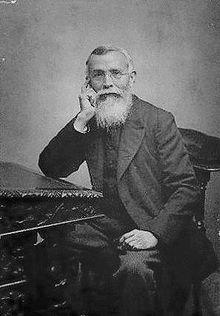 07-Jul-0892
07-Jul-0892Dadabhai Naoroji becomes the first Asian to be elected to the British Parliament
-
 28-Dec-1885
28-Dec-1885First Session of the Congress: The Journey Begins
On 28 December 1885, 72 social reformers, journalists and lawyers congregated for the first session of Indian National Congress at Gokuldas Tejpal Sanskrit College, Bombay.
-
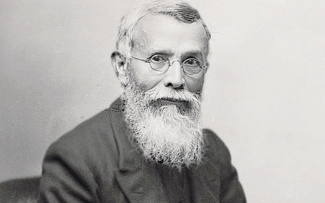 27-Dec-1886
27-Dec-1886Second Session of the Congress
The second session of the Congress took place under the leadership of Dadabhai Naoroji in Calcutta. The number of delegates had increased to 434. Towards the end of the session, the Congress decided to set up Provincial Congress Committees across the country.
-
 26-Dec-1890
26-Dec-1890Sixth Session
In his presidential address, Pherozeshah Mehta said 'To my mind, a Parsi is a better and a truer Parsi, as a Mohammedan or a Hindu is a better and truer Mohammedan or Hindu, the more he is attached to the land which gave him birth, the more he is bound in brotherly relations and affection to all the children of the soil, the more he recognises the fraternity of all the native communities of the country".
-
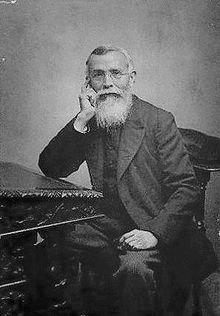 28-Dec-1892
28-Dec-1892Eighth Session
At its Allahabad Session in 1892, the Congress criticised the Indian Councils Act of 1892, which had just been put into operation by the colonial government. They said that the Act did not give the Indian people the right to elect their own representatives.
-
 26-Dec-1801
26-Dec-1801Mahatma Gandhi appears on the Congress Platform
The 1901 Calcutta Session was the first time Mahatma Gandhi appeared on the Congress platform. Then a lawyer based in South Africa, Gandhi urged the Congress to support the struggle against racial discrimination and exploitation in the country.
-
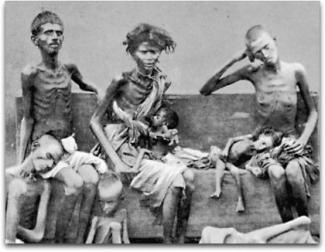 28-Dec-1896
28-Dec-1896Resolution Blaming the British for Famine
Under the leadership of Rahimatulla M Sayani, the Congress at its Calcutta Session, passed a resolution blaming the British for the famine that had devastated many parts of India. They condemned the provisions of the existing famine code as being 'inadequate' and attacked the government for the manner in which it was blocking private relief.
-
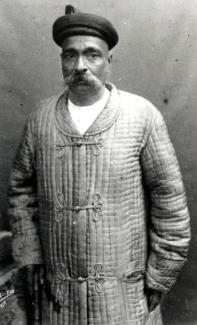 27-Dec-1897
27-Dec-1897Congress slams Tilak's arrest
The shadow of Bal Gangadhar Tilak arrest on charges of sedition, loomed large over the Amraoti Session. Surendranath Banerjea made full use of his brilliant oratorical skills while voicing his solidarity with Tilak. "For Mr. Tilak, my heart is full of sympathy, my feelings go forth to him in his prison house. A Nation is in tears,'he said.
-
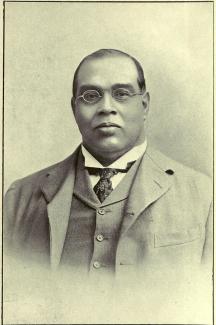 27-Dec-1899
27-Dec-1899Drain of Wealth
At its fifteenth session in Lucknow in 1899, the Congress demanded that the British government put a stop to the 'drain of wealth’ from India to England that had been taking place as a result of colonial rule. By raising this matter, Congress attacked a concept that formed the very basis of colonialism. It is no coincidence that Congress raised this under the presidentship of R.C. Dutt, who along with Dadabhai Naoroji, had been consistently criticising the British for the drain of wealth. This succeeded the 12th session in Calcutta in 1896, when the drain theory got a stamp of approval and the British were held responsible for the ‘drain of wealth’ from India which led to frequent famines and growing poverty in India.
-
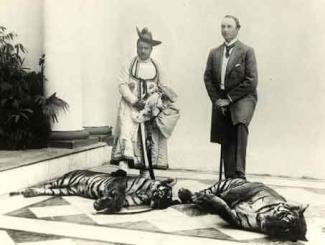 26-Dec-1904
26-Dec-1904Bombay Session, 1904
At its Bombay Session, the Congress protested the violation of rules by Lord Curzon as he used revenues from India for his forward policy in Tibet. The Congress also recorded its emphatic protest against the Curzon administration's proposal to divide Bengal, a province which was at the forefront of the anti-British struggle.
-
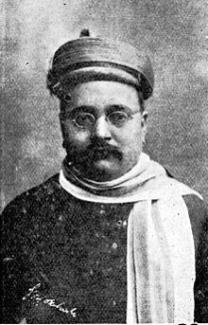 27-Dec-1905
27-Dec-1905Fissures emerge at Benares
The divisions between the 'moderates' led by Gopal Krishna Gokhale and Surendranath Banerjea and the 'extremists' led by Bal Gangadhar Tilak came to the fore in this session. While Tilak and Lala Lajpat Rai wanted the Congress to boycott the visit of the Prince of Wales in protest against the Bengal Partition, the moderates opposed any such move.
-
 26-Dec-1906
26-Dec-1906Congress declares Swaraj as its aim
To counter the increasing influence of the extremists, the moderates invited Dadabhai Naoroji to come from England to preside over the session. However, the vocabulary of the extremists triumphed in a way as Naoroji declared Swaraj as the 'only and chief remedy' In self government lies our hope, strength and greatness, he said.
-
 29-Mar-1907
29-Mar-1907Gandhi's first Satyagraha
On Sep 1906, Gandhiji led his first Satyagraha in Transvaal, South Africa, protesting against the Asiatic Registration Act. The legislation mandated that every Asian who wished to reside or possess property in South Africa had to register his or her name with the authorities. The punishment for not doing so was deportation without the right to appeal.
-
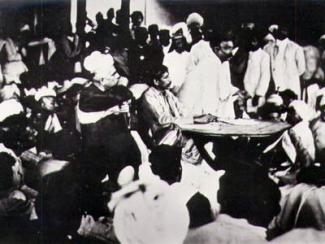 26-Dec-1907
26-Dec-1907The Surat Split
The Surat Session of the Congress was marred by disturbances. Extremist leaders like Bal Gangadhar Tilak, Lala Lajpat Rai and Bipin Chandra Pal were pushing for resolutions on Swaraj, Boycott and national education while the moderate leaders like Surendranath Banerjea and Gopal Krishna Gokhale were advocating a softer approach. With no meeting ground between the two sections, the Session disintegrated into confusion and eventually had to be suspended.
-
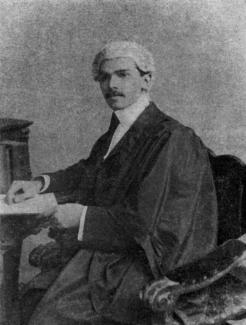 26-Dec-1910
26-Dec-1910Allahabad Session, 1910
-
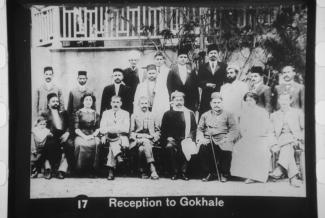 26-Dec-1911
26-Dec-1911Calcutta Session, 1911
-
 28-Nov-1913
28-Nov-1913Satyagraha in South Africa for miners
On October 28, 1913, Gandhiji led a march of 3000 Indian miners from New Castle to Volksrust to protest against the £3 tax which Indian indentured labourers were made to pay. The Satyagraha continued up till January 21, 1914.
-
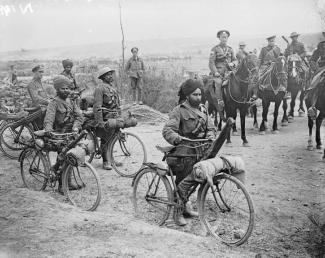 28-Dec-1914
28-Dec-1914World War I
The First World War had begun in Europe and the Congress promised all help in the prosecution of the War. The Congress demanded that the higher ranks of the army should be thrown open to Indians and that military schools and colleges should be established in the country.
-
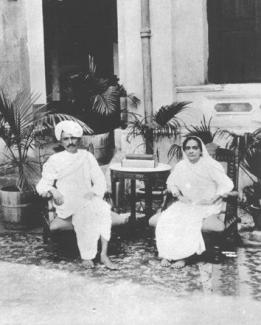 09-Jan-1915
09-Jan-1915Gandhiji returns
Gandhiji and Kasturba Gandhi set sail for England on July 18, 1914, where they arrived two days after the country had entered World War I. Even during his short stint in England, Gandhiji volunteered to set up an ambulance corps for the war. They returned to India on January 9, 1915, a homecoming that was to change the path of India's history.
-
 27-Dec-1915
27-Dec-1915Moderates and Extremists close ranks
The biggest achievement of the 1915 Bombay Session was that the constitution of the Congress was suitably altered so as to admit the delegates from the extremist section. Tilak responded by announcing the willingness of his supporters to re-enter the Congress. As a result the number of delegates rose to 2259 from 866 a year back.
-
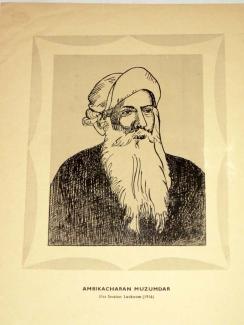 26-Dec-1916
26-Dec-1916Congress-League unity
The 1916 Lucknow Session represented the unification of the moderates and extremists within the Congress but also the closing of ranks between the Congress and the All India Muslim League. The League also held its session in the same city, Lucknow, that year.
-
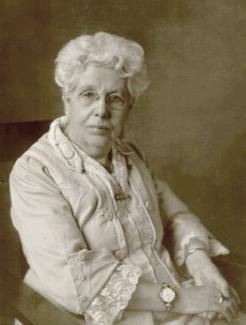 26-Dec-1917
26-Dec-1917First woman President
The Congress got its first woman President at the Calcutta Session in 1917: Annie Besant. "To see India free, to see her hold up her head among the Nations, to see her sons and daughters respected everywhere, to see her worthy of her mighty Past, engaged in building a yet mightier future - is not this worth working for, worth living for and worth dying for? She asked during her presidential address.
-
 22-Mar-1918
22-Mar-1918The Kheda Satyagraha
-
 29-Aug-1918
29-Aug-1918Special Session, Bombay
The Congress, at the Special Session in Bombay, termed the Montague-Chelmsford reforms as disappointing. It demanded a Declaration of Rights for the people of India and asserted that Indian legislatures should have the same measure of Fiscal Autonomy as the Self-governing Dominions of the Empire.
-
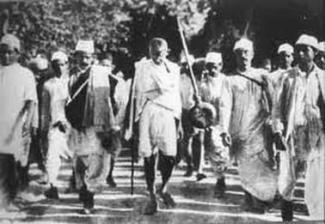 06-Apr-1919
06-Apr-1919Protests Against the Rowlatt Bills
On April 6, 1919, Gandhiji launched his first all-India Satyagraha against the Rowlatt Bills, which indefinitely extended 'emergency measures' to control public unrest.
-
 13-Apr-1919
13-Apr-1919Jallianwala Bagh Massacre
The Jallianwala Bagh massacre was a key moment in Indian History as on April 13 1919, British Forces, led by Brigadier-General REH Dyer opened fire on a crowd of close to 20,000 people in Amritsar, killing over a thousand.
-
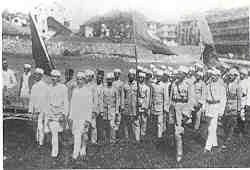 23-Nov-1919
23-Nov-1919Gandhiji attends the Khilafat Conference in Delhi
Gandhiji and the Congresss joined the Khilafat movement launched by prominent Muslim leaders to protest against British designs against the Caliphate in Turkey. In the process, Gandhiji not only united the country across the religious divide, he also transformed the Congress into a mass movement.
-
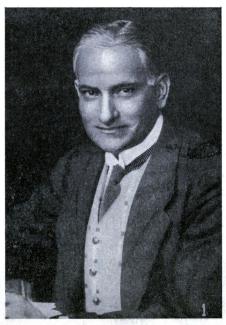 26-Dec-1919
26-Dec-1919Amritsar Session
By holding its 34th Session at Amritsar on 26 Dec 1919, the Congress expressed its deep solidarity with the people killed in the Jallianwala Bagh massacre in the city earlier that year. Under the presidentship of Motilal Nehru, the Congress condemned the massacre in the strongest of terms.
-
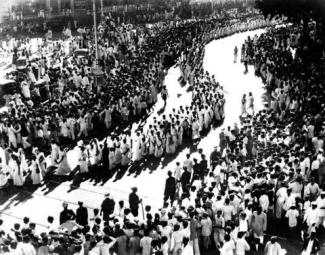 01-Aug-1920
01-Aug-1920Non-cooperation
On August 1, 1920, a non-cooperation movement was led by Gandhiji against the British for not addressing the widespread anger caused by the Jallianwala Bagh massacre as well as the Khilafat issue. Gandhiji exhorted the people to give up colonial titles and government posts and boycott foreign articles.
-
 26-Dec-1920
26-Dec-1920On war-footing
On 26 Dec 1920, at its Nagpur Session,, the Congress sought to intensify the Non-Cooperation Movement. It urged merchants to boycott any foreign trade relations and urged government servants to help the national cause. The importance of using non-violent means was reiterated. The party also made certain important organisational changes. The strength of the A I. C. C. increased to 350 and a Working Committee of 15 members was constituted.
-
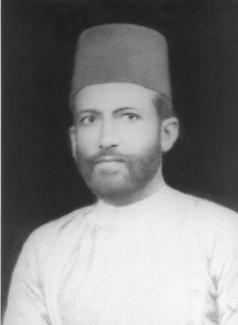 27-Dec-1921
27-Dec-1921Ahmedabad Session, 1921
-
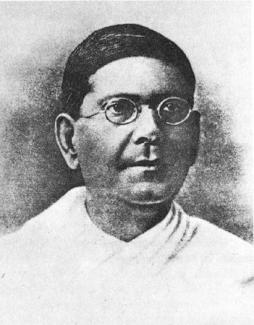 26-Dec-1922
26-Dec-1922Council entry
At the Gaya session on 26 Dec 1922, Congress leaders debated on the merits and demerits of continuing its boycott of the government-created councils. While the 'no-changers' led by C Rajagopalachari and those loyal, suggested to Gandhiji advocated continuing the boycott, the Swarajists led by C.R. Das suggesting participating in the councils.
-
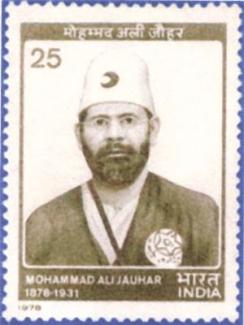 28-Dec-1923
28-Dec-1923Kakinada Session, 1923
The Kakinada Session was presided over by Maulana Mohammad Ali, who was released in 1919 after spending five years in prison. 'Our Swaraj must be Sarvaraj: the Raj of all...Swaraj must be won by the minimum sacrifice of the maximum number and not by the maximum sacrifice of the minimum number,' the Maulana said during his presidential address.
-
 01-Jan-1924
01-Jan-1924Congress Seva Dal
-
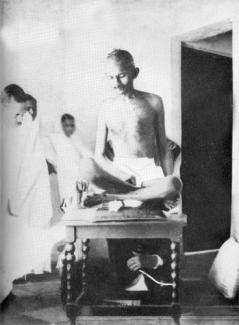 17-Sep-1924
17-Sep-1924Fast for Hindu-Muslim unity
After hearing news of communal violence in Kohat and also in Amethi, Sambhal and Gulbarga, Gandhiji went on a fast for Hindu-Muslim unity on September 17, 1924, He ended his fast only after 21 days.
-
 26-Dec-1924
26-Dec-1924Kanpur Session, 1925
Sarojini Naidu became the second woman to preside over the Congress after Annie Besant. She said during her presidential address: 'How shall I stir your hearts, how shall I light that flame that cannot die, so that your slavery, so that your disunion, so that all the things that make you hungry and naked and forlorn, oppressed and battered 'will be burnt in that undying fire?'
-
 26-Dec-1924
26-Dec-1924Gandhi-Nehru-Das pact
To end the infighting within the Congress, a pact was signed between Gandhiji on one hand and Motilal Nehru and C.R. Das on the other whereby the Congress accepted that the Swarajists were in the Councils on the Congress's behalf. In return, the Swarajists agreed that only those who spun Khadi could be members of the Congress.
-
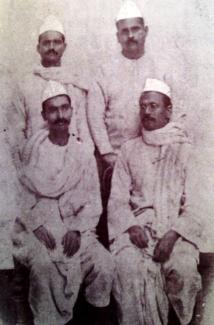 24-Oct-1924
24-Oct-1924Khadi becomes compulsory
A number of changes in the Congress constitution were affected at the Bombay Session in 1934. Wearing of Khadi was made a necessary criterion for elective membership. A cap of 2000 was put for the number of Congress delegates. A. I. C. C. was reduced to half its strength. The delegates were to be elected at the rate of 1 per every 500 primary members, thereby making them representatives of the people.
-
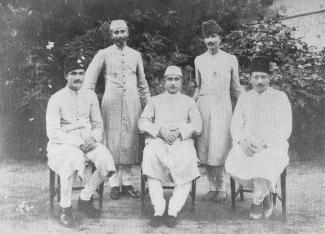 27-Dec-1927
27-Dec-1927Congress boycotts the Simon Commission
At the 1927 Madras Session, the Congress resolved to boycott the Simon Commission "at each stage and in every form". In a separate resolution, the Creed of the Congress was defined: "the goal of the Indian people is complete National Independence".
-
 12-Feb-1928
12-Feb-1928Bardoli Satyagraha
On February 12 1928, Sardar Patel under Gandhi's leadership launched a Satyagraha in Bardoli against high taxes on farmers who were already reeling under floods and famine. It continued up till August 6, 1928, when an agreement was arrived at with the government.
-
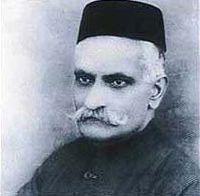 29-Dec-1928
29-Dec-1928Dominion Status
During the Calcutta session,Gandhiji moved a resolution accepting the Motilal Nehru report's recommendation of Dominion Status within two years. However, Jawaharlal Nehru moved an amendment reiterating the Congress's commitment to independence. To arrive at a middle ground, the Congress gave the British a warning that a civil disobedience movement would start if India was not granted dominion status by December 31, 1929.
-
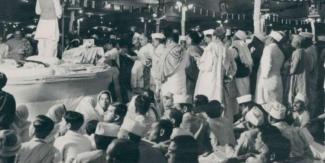 19-Dec-1929
19-Dec-1929Purna Swaraj is the Goal
With Pandit Jawaharlal Nehru at the helm, the Congress went a step declaring Purna Swaraj (complete independence) as its ultimate goal. “We long for peace and the hand of fellowship will always be stretched but to all who may care to grasp it. But behind the hand will be a body which will not bend to injustice and a mind that will not surrender on any vital point,” Pandit Nehru said during his presidential address.
-
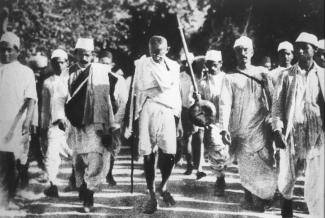 12-Mar-1930
12-Mar-1930Dandi March
On March 12, 1930, Gandhiji started his Dandi March (Salt Satyagraha) from his residence at Sabarmati protesting against the 1882 Salt Act, which gave the British a monopoly on the collection, storage and trade of salt, and which levied a salt tax. On Apr 6, 1930, Gandhiji broke Salt laws at Dandi.
-
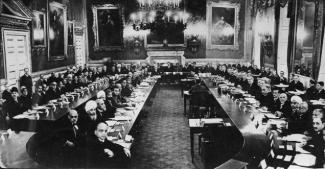 12-Nov-1930
12-Nov-19301st Round Table Conference
The conference, chaired by the British PM, Ramsay MacDonald, discussed constitutional issues pertaining to India. The Congress did not attend the Conference as its leaders were in jail for civil disobedience.
-
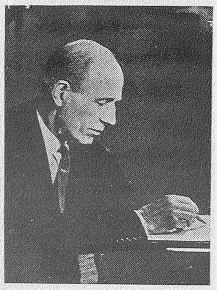 05-Mar-1931
05-Mar-1931Gandhi Irwin Pact
Gandhiji entered into a pact with the then Viceroy, Lord Irwin, thereby agreeing to discontinue the civil disobedience movement and participate in the Round Table Conferences, on Irwin's acceptance to withdraw the Salt tax and ordinances and cases against the Congress and other nationalists.
-
 29-Mar-1931
29-Mar-1931Karachi Session, 1931
The Congress expressed its admiration of the bravery and sacrifice of Bhagat Singh, Sukhdev and Rajguru who were executed on March 23, 1931, while also voicing its disapproval of political violence. They declared the execution of the three young men to be an act of wanton vengeance.
-
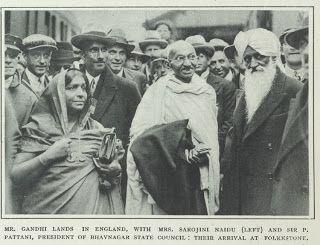 07-Sep-1931
07-Sep-19312nd Round Table Conference
The deliberations of the conference that started on September 7, 1931, failed to bring about a consensus between Gandhiji and other Indian participants on separate electorates and other safeguards for Muslims and other minorities.
-
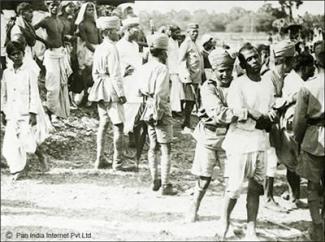 01-Jan-1932
01-Jan-1932Civil Disobedience Revived
Lord Willingdon became the Viceroy in Nov 1931. He violated the Gandhi-Irwin Pact by repressing Congress and other nationalists. Hence, Congress revived the civil disobedience movement on 4 Jan 1932
-
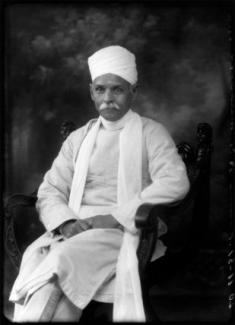 24-Apr-1932
24-Apr-1932Communal Award
Despite Police vigilance, over 500 delegates attended the Congress session in Delhi in April 1932. Pandit Madan Mohan Malaviya, the President elect was arrested en-route. Four resolutions were passed reiterating complete Independence as the goal of the Congress, endorsing the revival of Civil Disobedience, expressing complete faith in Gandhiji's leadership and reaffirming deep faith in non-violence.
-
 16-Aug-1932
16-Aug-1932Communal Award
On August 16, 1932, the British Government announced that members to the provincial legislatures would be elected from separate electorates/constituencies, which would primarily be demarcated on a communal basis.
-
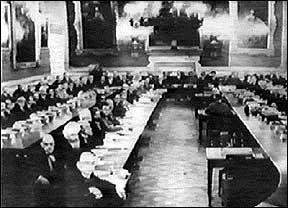 17-Sep-1932
17-Sep-1932The Third Round Table Conference
The Third Round Table Conference began on November 17, 1932 and continued up to December 24, 1932. The Congress boycotted it.
-
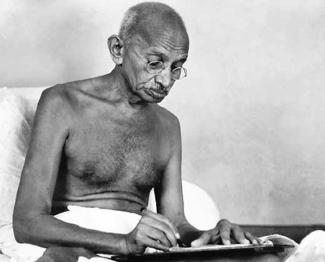 20-Sep-1932
20-Sep-1932Fast against Separate Electorate
On September 20, 1932, Gandhiji went on a fast protesting against a separate electorate for Harijans. In his words, such 'separation would kill all prospects of reform'; 'when a man relies on a support, to that extent he weakens himself. -
 24-Sep-1932
24-Sep-1932Poona Pact
Gandhiji ended his fast against against separate electorates for Harijans. This was after a pact was reached between him and Dr BR Ambedekar that allowed a certain number of reserved seats for Harijans
-
 02-Aug-1935
02-Aug-1935Government of India Act, 1935
On August 2, 1935, The Government of India Act, 1935 was passed. It laid down the constitutional framework for the governance of British India at the federal and provincial levels.
-
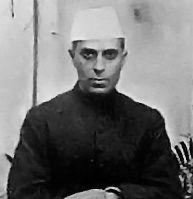 12-Apr-1936
12-Apr-1936Lucknow Session, 1936
Lashing out at the British during his presidential address at the Lucknow Session, Pandit Nehru said 'Meanwhile, the decay of British Imperialism in India becomes ever more apparent. It cannot by its very nature solve our economic problems and rid us of our terrible poverty, which it has largely itself created. It subsists on a normal fare of the fiercest repression and a denial of civil and even personal liberty.
-
 27-Dec-1936
27-Dec-1936First 'rural' Session
Held at Faizpur near Jalgaon, this was the first Congress Session in a rural area. Pandit Nehru said during his presidential address, 'A vaster and more pressing problem is that of the peasantry, for India is essentially a land of the peasants. In recognition of this fact, and to bring the Congress nearer to the peasant masses, we are meeting here today at the village of Faizpur and not, as of old, in some great city'.
-
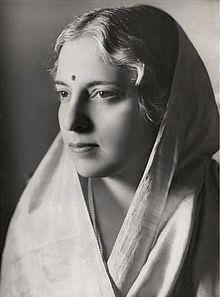 01-Apr-1937
01-Apr-1937Congress wins Provincial Elections
In 1937, first elections were held for the provincial legislatures. About 10 to 12 % of the population had the right to vote. The Congress won an absolute majority in 5 out of 11 provinces and formed governments in 7 provinces.
-
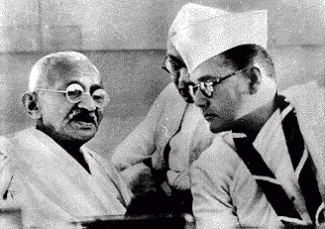 19-Feb-1938
19-Feb-1938Haripura Session
The fifty-first session of the Congress at Haripura was presided over by Subhash Chandra Bose. Towards the end of the session, there was a contest for who would be the president-elect for the next session between Netaji and Pattabhi Sittaramayya. Bose won with a thumping margin even though Sittaramayya was seen as Gandhiji's nominee.
-
 10-Mar-1939
10-Mar-1939Netaji resigns
The Congress met at Tripuri under special circumstances as president Subhas Chandra Bose was very ill and Gandhiji was fasting in Rajkot. As Bose was too ill to preside over some sittings, Maulana Azad conducted proceedings on his behalf. However, differences cropped up between Bose and a section of the Working Committee and the former resigned from his presidentship.
-
 03-Sep-1939
03-Sep-1939Proclamation of Emergency
Governor-General Lord Linlithgow made a Proclamation of Emergency in India due to commencement of the Second World War, thereby assuming control over provincial governments.
-
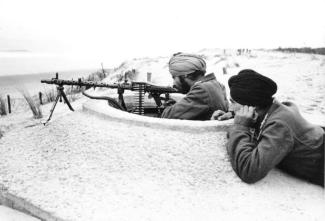 22-Oct-1939
22-Oct-1939World War II
Congress ministers resigned protesting Governor-General's unilateral declaration of India's participation in World War II, coupled with his non-acceptance of the Congress' pre-conditions for co-operation which included an Indian national government at the centre and a commitment to India's complete independence after the war.
-
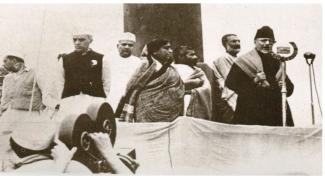 19-Mar-1940
19-Mar-1940Ramgarh Session
The Ramgarh Session was taken up entirely with the crisis brought about by the war and passed only one lengthy resolution on the issue. The Congress protested against the declaration of India as a belligerent country without any reference to the people and stated that the British government was carrying on the war fundamentally for imperialist ends. The party also declared that nothing short of complete independence is acceptable.
-
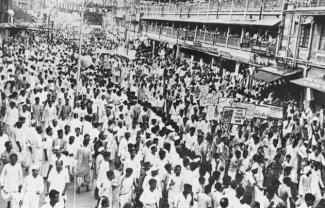 15-Oct-1940
15-Oct-1940Individual Civil Disobedience
October 17 1940, Gandiji launched the individual civil disobedience movement (as distinguished from the mass civil disobedience movement) with Vinoba Bhave as the first individual satyagrahi and Nehru, the second.
-
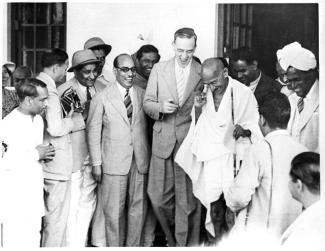 22-Mar-1942
22-Mar-1942Failure of the Cripps Mission
From March 22, 1942, Sir Stafford Cripps, carried out negotiations with the Congress seeking support from Indians for Britain in World War II. The Congress sought immediate and complete transfer of power. The negotiations, which came to an end on April 11, 1942, failed as the British did not agree to the demand.
-
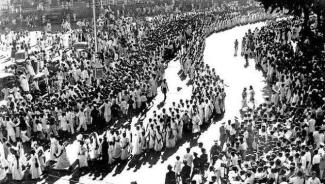 09-Aug-1942
09-Aug-1942Quit India Movement
The Quit India movement marked the begining of the last phase of Brtish rule in India. Starting from the August Kranti Maidan, the movement spread like wild-fire through the country, culminating with India's Independence in 1947.
-
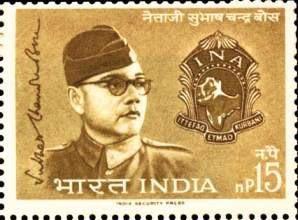 01-Sep-1942
01-Sep-1942Indian National Army (INA)
February 12 1942, the Indian National Army was formed in South-East Asia to secure Indian independence with Japanese assistance. Led initially by Mohan Singh for a very brief period, Subhas Chandra Bose became the Commander-in-Chief in June 1943.
-
25-Jun-1945
Shimla Conference
Starting June 25, 1945, Lord Wavell negotiated with Indian leaders for Indian support to fight to the II World War. In return, he proposed to set up an interim government comprising Indians after the war, which would also draft a new constitution. The negotiations, which went on till July 14, 1945, failed to bring consensus between the Congress and Muslim League
-
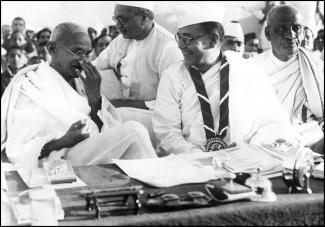 18-Aug-1945
18-Aug-1945Netaji Subhas Bose's Reported Death
On August 18, 1945, a Japanese news agency reported that Netaji Subhas Chandra Bose died in a plane crash in Taiwan.
-
 21-Oct-1945
21-Oct-1945Provisional Govt of Free India
On October 21, 1943, Subhas Chandra Bose founded the Provisional Government of free India. It was recognised by nine world powers including Germany, Italy, Japan and Myanmar. It declared war against Britain and the U.S.A.
-
 24-Mar-1946
24-Mar-1946British Cabinet Mission
The British Cabinet Mission's May 16 plan recommended election of a constituent assembly and creation of a loose three-tier confederation of united India, with separate grouping of majority Hindu and Muslim provinces and with equal representation of such Hindu and Muslim groups at the Union level. Unable to create a consensus between the League and the Congress, the Cabinet Mission left India on June 29, 1946.
-
 07-Jul-1946
07-Jul-1946Congress Accepts Cabinet Mission
On July 7, the Congress agreed to the May 16 plan. On July 10, 1946, Nehru stated that the Congress would enter the Constituent Assembly completely unfettered by agreements and free to meet all situations as they arise' On July 29, 1946, the Muslim League, which had earlier approved the Mission's proposals, withdrew its support for the Plan and demanded the creation of Pakistan.
-
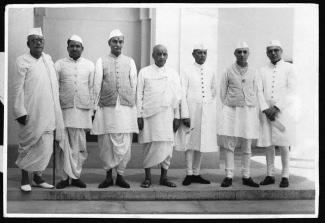 01-Aug-1946
01-Aug-1946Second Provincial Government
New governments were formed at the provinces based on the election held in March, 1946. The Congress won absolute majority in Bombay, Madras, United Provinces, Bihar, Orissa and Central Provinces. In Punjab, a Coalition government comprising the Congress, Akalis and the Unionist Party was formed. The Muslim League secured a majority in Bengal and Sindh.
-
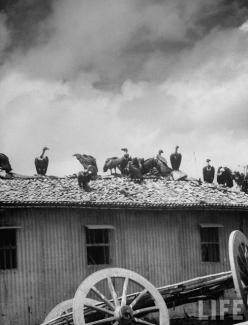 16-Aug-1946
16-Aug-1946Direct Action Day
The Muslim League called for observance of Direct Action Day on August 16, 1946 for creation of a separate Pakistan. This triggered communal violence in Calcutta resulting in the death or injury of around 20,000 persons.
-
 02-Sep-1946
02-Sep-1946Caretaker Govt constituted
After being invited by Lord Wavell on August 12, 1946, a caretaker government was formed on September 2 with Nehru as Vice-President of the Viceroy's Executive Council. The Muslim League was not part of the caretaker government as it withdrew its acceptance of the Cabinet Mission Plan.
-
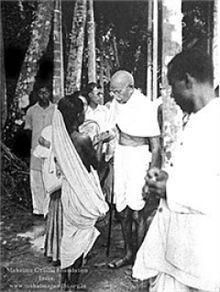 06-Oct-1946
06-Oct-1946Peace Mission in Bengal
On November 6, 1946 Gandhiji embarked upon his peace mission in Bengal to stop communal violence. By the time he completed the mission on March 2, 1947, he had covered 49 villages across the province that had been badly hit by communal strife.
-
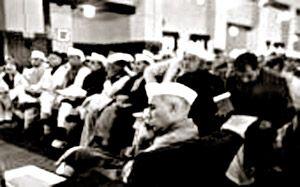 09-Dec-1946
09-Dec-1946Constituent Assembly
The elections to the Constituent Assembly were held in July-August 1946. The first sitting of the assembly, chaired by Dr. Sachidananda Sinha, was held on December 9, 1946. However, members belonging to the Muslim League boycotted the meeting, as they were adamant on the creation of Pakistan.
-
 23-Mar-1947
23-Mar-1947Asian Relations Conference
On March 23, 1947, Nehru hosted the Asian Relations Conference, chaired by Sarojini Naidu, to bring together the leading men and women of Asia on a common platform to study the problems of common concern to the people of the continent, to focus attention on social, economic and cultural problems of the different countries of Asia, and to foster mutual contact and understanding.
-
 03-Jun-1947
03-Jun-1947Decision on Partitioning India
June 3, 1947, Lord Mountbatten announced his plan to partition India to resolve the deadlock created by the refusal of the Muslim League to join the Constituent Assembly framed to form the constitution of India.
-
 05-Jul-1947
05-Jul-1947Inviting Princely States
On July 5, 1947, Sardar Patel invited Princely States to join the forthcoming Indian Union, by way of transferring their powers over Defence, Foreign Affairs and Communications in return for privy purses to the princes (as the scheme of the independence outlined by Lord Mountbatten left the Princely States free from having to join either India or Pakistan).
-
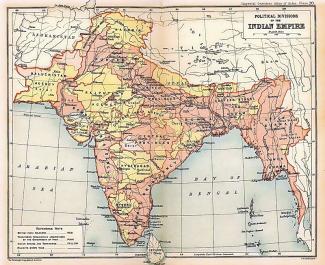 18-Jul-1947
18-Jul-1947Indian Independence Act, 1947
On July 18, 1947, the Indian Independence Act, 1947 was passed by the British for partition and transfer of powers on the lines of the announcement made by Lord Mountbatten in June 1947.
-
 14-Aug-1947
14-Aug-1947Princely States join India
All but three of the 565 Princely States signed Instruments of Accession and Standstill agreements with the forthcoming Indian Union by August 14 1947. The three states which hadn't signed the Instruments of Accession by then were Junagadh, Hyderabad and Kashmir.
-
 29-Aug-1947
29-Aug-1947Drafting Committee of Constituent Assembly
On August 29, 1947, the Constituent Assembly constituted the Drafting Committee to formulate the provisions of a Constitution for India, with Dr. B.R. Ambedkar as its chairman.
-
 09-Nov-1947
09-Nov-1947Junagadh Becomes Part of India
After the ruler, dewan and the executive council of Junagadh unanimously gave their approval and consent to the Instrument of Accession, the Indian Union took over the administration of the state. A small Indian military was despatched to Junagadh, which was given a resounding welcome by the local people.
-
 26-Nov-1947
26-Nov-1947J&K Accedes to the Indian Union
On October 26, 1947, Maharajah Hari Singh of Jammu and Kashmir, executed the Instrument of Accession to accede to the Dominion of India.
-
 15-Dec-1947
15-Dec-194715 States Join Orrisa
On December 15, 1947, as result of the efforts of the State Ministry headed by Sardar Patel and assisted by V.P. Menon, 12 out of 15 class B and C class states agreed to sign an agreement with the Government of India whereby the administration of the states are to be taken over by the Government of Orissa. The merger of all 25 states except 1 became effective on January 1, 1948. The next day, 10 A-class states also agreed to the same.
-
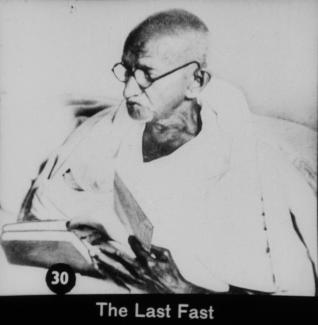 13-Jan-1948
13-Jan-1948Gandhiji's Last Fast
Upset at the reports of communal violence and disharmony that he had been hearing since his arrival in Delhi a month after independence, Gandhiji began fasting for religious unity on January 13, 1948. He ended his fast on January 19, when a Peace Committee of 180 members from Hindu, Muslim, Sikh and other religious communities with Dr. Rajendra Prasad as its convenor, signed a pledge assuring him that such incidents would not happen again.
-
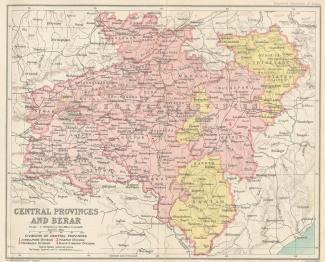 16-Jan-1948
16-Jan-194811 Chattisgarh states Join C.P. and Berar
On December 16, 1947, 11 Chattisgarh states agreed to join the Central Provinces (C.P.) and Berar with effect from January 1, 1948.
-
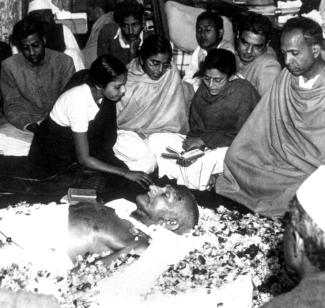 30-Jan-1948
30-Jan-1948Martyrdom of Mahatma Gandhi
Mahatma Gandhi was assassinated by a religious fanatic Nathuram Godse on January 30, 1948 when he was on the way to a prayer meeting. Prime Minister Jawahar Lal Nehru stated: "The light has gone out from our lives" as the nation plunged into mourning.
-
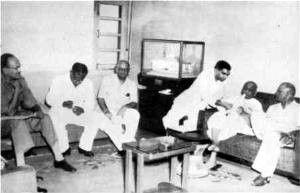 20-Feb-1948
20-Feb-1948Deccan States Merge with Bombay
On February 20, the rulers of 15 Deccan states agreed to integrate their administration with that of the Province of Bombay and to confer full and exclusive powers and jurisdiction in relation to their states to the Government of India.
-
 17-Mar-1948
17-Mar-1948Matsya Union Formed
On 17 March 1948, the Matsya Union came into being with the integration of the states of Alwar, Bharatpur, Dholpur and Karauli.
-
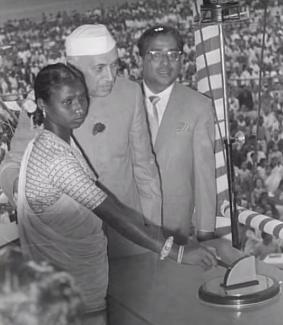 07-Jul-1948
07-Jul-1948Damodar Valley Corp Created
The Damodar Valley Corporation was created on 7 July 1948 as the first multipurpose river valley project of independent India. The project has been transmitting power since 1953 and has contributed greatly to the development of Eastern India.
-
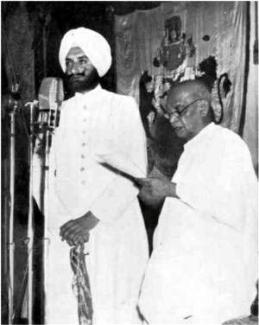 15-Jul-1948
15-Jul-1948East Punjab States Union formed
On July 15, 1948, Sardar Patel, Minister for States, inaugurated the Union of Patiala and East Punjab States, consisting of the States of Patiala, Kapurthala, Nabha, Jind, Faridkot, Malerkotla, Kalsia and Nalagarh.
-
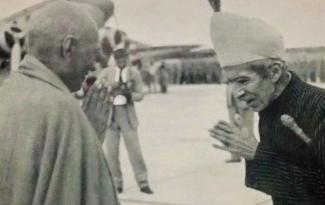 18-Sep-1948
18-Sep-1948Hyderabad Becomes Part of India
On September 17, 1948, the Nizam surrendered after the Indian military successfully marched into Hyderabad, the last Princely State to accede to the Indian Union.
-
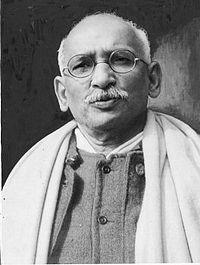 18-Dec-1948
18-Dec-1948Jaipur Session
Holding the first Congress Session after independence at Jaipur was of immense symbolic value. It represented the integration of erstwhile princely states like Jaipur into the Indian Union. The Jaipur Session saw the merger of all the political outfits in various principalities of the erstwhile principality following the Congress' agenda, with the Congress party.
-
 20-Jan-1949
20-Jan-1949Conference Against Dutch Aggression in Indonesia
On January 20, 1949, Prime Minister, Pandit Jawahar Lal Nehru inaugurated in New Delhi a Conference of 19 nations (18 Asian countries and Australia) Against Dutch Aggression in Indonesia. His inaugural address read, "If this challenge is not met effectively, then indeed, the consequences will affect not merely Indonesia, but Asia and the entire world."
-
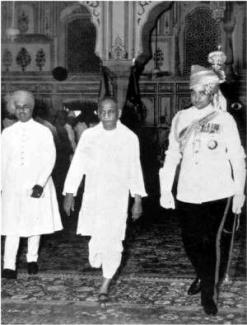 30-Mar-1949
30-Mar-1949Greater Rajasthan Union Inaugurated
On March 30, 1949, Sardar Patel, the Deputy Prime Minister of India, inaugurated the Greated Rajasthan Union, which brought together 19 princely states, 2 chiefships and the district of Ajmer-Merwara (22 regions).
-
 01-Jul-1949
01-Jul-1949Cochin -Travancore Union Born
On July 1, 1949, Cochin and Travancore were merged by the Ministry of States and integrated into the Union to form the state of Travancore-Cochin or Thiru-Kochi.
-
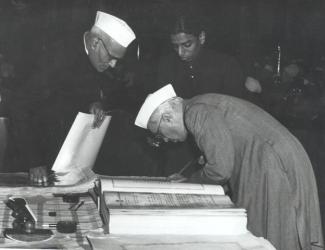 26-Sep-1949
26-Sep-1949Constitution of India
The Constituent Assembly, on behalf of the people of India, adopted the Constitution of India, a document that made India into a sovereign democratic republic and shaped its future growth.
-
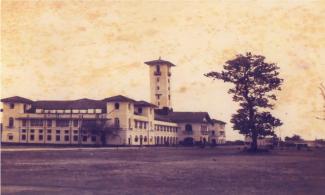 18-Aug-1950
18-Aug-1950IIT Kharagpur
On August 18, 1950, Maulana Abul Kalam Azad, India's Education Minister, opened the first Indian Institute of Technology (IIT) at Kharagpur. Besides paving the way for many more IITs to be set up in the future, this sowed the seeds for India's future technological prowress.
-
 15-Dec-1950
15-Dec-1950Sardar Patel passed away
Sardar Vallabhbhai Patel, the 75 year old Bismark of India, who was one of the foremost architects of India's freedom and its consolidation, passed away.
-
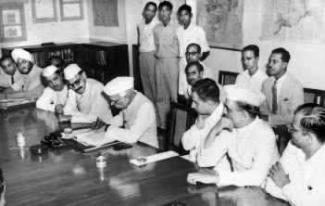 09-Jul-1951
09-Jul-1951First 5 Year Plan
Prime Minister Jawaharlal Nehru presented the first five-year plan on July 9 1951. The total planned budget of Rs 2069 crore was allocated to seven broad areas, irrigation and energy, agriculture and community development and transport and communications got the highest allocation.
-
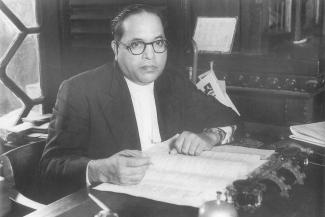 11-Oct-1951
11-Oct-1951Ambedkar Resigns
On October 11, 1951, Dr B.R. Amedkar, the Law Minister until then, left office after his resignation from the Government on September 27, 1951, after the Hindu Code Bill was dropped by the Cabinet.
-
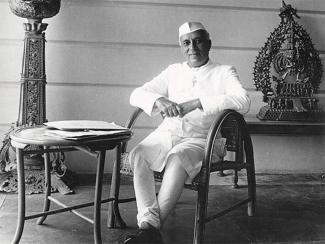 13-May-1952
13-May-1952Congress Wins First Election After Independence
The Congress party garnered an overwhelming majority, winning 364 out of 489 seats in India's first general election. On May 13, 1952, the first elected government of free India was formed under the newly adopted Constitution, with Pandit Jawahar Lal Nehru as the Prime Minister and 14 other members forming part of the cabinet.
-
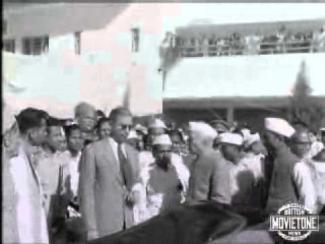 15-Jan-1953
15-Jan-1953Hyderabad Session, 1953
It was only five years back that the princely state of Hyderabad had been integrated into India. However, the Hyderabad session will be remembered for Pandit Nehru’s stirring address on world peace. “Peace is not merely the absence of war. It is also a state of mind,” he said.
-
 29-Apr-1954
29-Apr-1954Panchsheel Agreement
The 8-year Panchsheel treaty was signed between India and China on 29 April 1954. The agreement focused on the disputed territories of Aksai Chin and South Tibet and recognised the principles of mutual respect by both countries of each others' territorial integrity and sovereignty, mutual non-aggression, mutual non-interference in each other's internal affairs and peaceful co-existence.
-
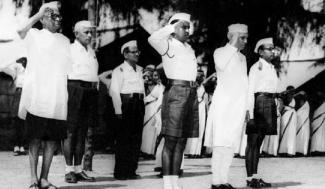 21-Jan-1955
21-Jan-1955Towards Socialism
The Avadi Session, 1955 represented the Congress's distinct shift towards socialism. The Congress declared the socialist pattern of society to be its goal. The party resolution also stated that planning must take place with a view towards the establishment of such a society.
-
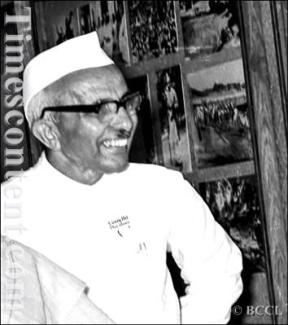 18-Jan-1958
18-Jan-1958The Language Question
The 'language question' featured prominently in the discussions during the Gauhati Session in 1958. The party resolution stated that all languages mentioned in Schedule VIII of the Constitution are national languages, which should all be encouraged equally. However, the resolution did stress that there was a need for a 'link language, which should not be a foreign language.
-
 09-Jan-1959
09-Jan-1959Indira Gandhi Becomes President
In 1959, Indira Gandhi was elected as the Congress president. She had already been an elected member of the CWC since 1955 but at Nagpur, the outgoing president U.N. Dhebar suggested her name. Lal Bahadur Shastri proposed her name in the CWC and Indiraji, then just 41 years of age, became the president of the Congress party.
-
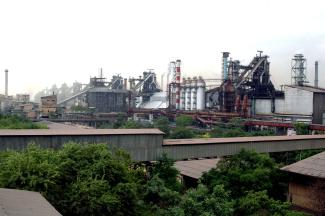 04-Feb-1959
04-Feb-1959Bhilai Steel Plant Inaugurated
First President of India, Dr. Rajendra Prasad, on 4 February 1959 inagurated the Bhilai Steel Plant which was India's first and main producer of steel rails, wide steel plates and other steel products.
-
 01-Aug-1959
01-Aug-1959Swatantra Party
Besides the rise of Indira Gandhi, the other major fallout of the Nagpur session was the alienation of the free-market proponents within the Congress. The economic resolution passed at the session emphasised the Congress's committment towards land reforms and cooperative farming. Upset at this left-ward turn, C Rajagopalachari and N.G. Ranga left the Congress and formed the Swatantra Party.
-
 16-Jan-1960
16-Jan-1960Bangalore Session
The newly elected Congress president N Sanjeeva Reddy launched a spirited counter-attack against the Swatantra Party. ' What has been said is merely the criticism of the Congress and some of its leaders. It is on this negative basis that this new party stands, with no foundation at all,' he said.
-
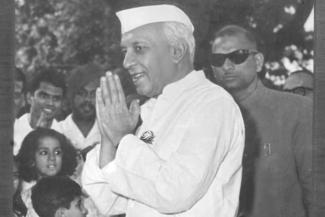 02-Apr-1962
02-Apr-19621962 General Elections
The Congress's efforts at nation-building under the leadership of Pandit Nehru were recognised by the people as it was re-elected to power in the 1962 General Elections. The party won 361 seats out of a total of 494, the Communist Party of India was a distant second with a tally of 29.
-
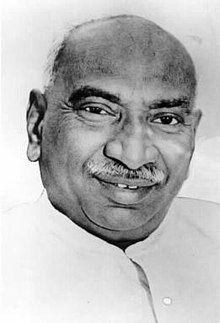 09-Jan-1964
09-Jan-1964Bhubaneshwar Session
The Congress met at Bhubaneshwar in 1964 under K Kamaraj. The Congress's commitment to socialistic ideals, which had been expressed during the Avadi and Nagpur sessions, was reiterated in Bhubaneshwar. However, Pandit Nehru suddenly fell ill during the deliberations at Bhubaneshwar.
-
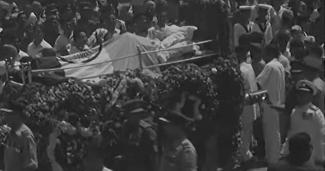 27-May-1964
27-May-1964Pt Nehru passes away
The first Prime Minister of Independent India Pandit Jawaharlal Nehru passed away at the age of 74 on 27 May, 1964, bringing an end to one of the most illustrious chapters in the nation's history. He left behind a legacy of strong democratic institutions and a state based on the values of secularism and socialism.
-
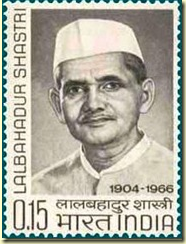 09-Jun-1964
09-Jun-1964Shastriji Takes Over as PM
Lal Bahadur Shastri took over as the Prime Minister on June 9, 1964. In his address to the Nation on June 11, Shastriji said: "Our way is straight and clear, the building up of a socialist democracy at home with freedom and prosperity for all.."
-
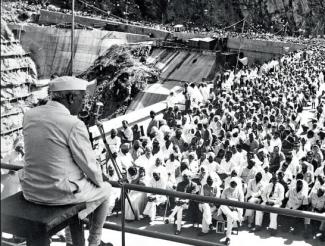 06-Jul-1964
06-Jul-1964Bhakra Nangal Dam Inaugurated
Prime Minister Pandit Nehru inaugurated the Bhakra Nangal Dam. He said: "Bhakra, the new temple of resurgent India, is the symbol of India's progress." The dam revolutionised irrigation in northern India, thereby preparing the foundation for the Green Revolution, which removed India's foodgrain shortage.
-
 05-Aug-1965
05-Aug-1965Pakistan Attacks India
On 5 Aug 1965, thousands of Pakistani soldiers crossed the Line of Control dressed as Kashmiri locals and tried to infiltrate into various areas within Kashmir. India retaliated against the attack in self-defence. The war ended after the signing of the Tashkent Declaration. It was during the war that Shastriji gave us the slogan 'Jai Jawan, Jai Kisan' launching a war against both external agression as well as the domestic food shortage.
-
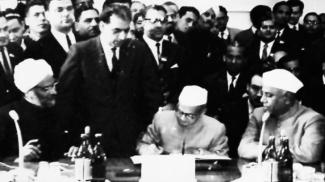 11-Jan-1966
11-Jan-1966Shastri Ji Passes Away at Tashkent, USSR
India and Pakistan signed the Tashkent Declaration on January 10, 1966 to bring an end to the Indo-Pak war. Shastriji passed away the next day due to a heart attack.
-
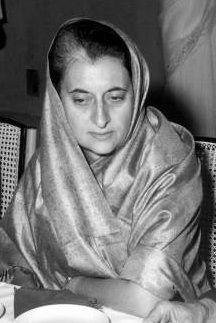 24-Jan-1966
24-Jan-1966Indira Gandhi chosen as Prime Minister
On January 24. 1966 Smt Indira Gandhi took over as the Prime Minister of India. After Shastriji's death in Tashkent Shri Gulzari Lal Nanda had been functioning as the caretaker Prime Minister. He had performed a similar role after Pandit Nehru's death in 1964.
-
 23-Jun-1967
23-Jun-1967Ten Point Programme
At the AICC meet in June 1967, Indiraji unveiled her Ten Point programme seeking social control of banking institutions; nationalisation of general insurance; nationalisation of export and import trade; public distribution of foodgrain; curbs on monopolies and concentration of economic power; limits on urban incomes and property; better implementation of land reform; and an end to princely privileges and privy purses.
-
 19-Jul-1969
19-Jul-1969Bank Nationalisation
14 major private banks were nationalised to open the doors of the banking sector to the poor. The expansion of commercial banking had so far excluded rural areas and small-scale borrowers. The success of the decision can be gauged by the fact that by 1979, the total number of branches of these banks increased from 8,262 in 1969 to 30,202.
-
 10-Mar-1971
10-Mar-1971Indira Triumphs: People Vote for 'Garibi Hatao'
The revolutionary policies pursued by Indiraji were vindicated in March 1971, when the Congress won an emphatic victory in the Lok Sabha elections. The party improved its tally from 283 seats in 1967 to 352 seats in the fifth general election. Buoyed by the victory, the Congress rededicated itself to eradicating poverty from the country.
-
 31-Jul-1971
31-Jul-1971Privy Purses Abolished
On July 31, 1971 The Parliament passed the 26th Constitutional Amendment, abolishing the privy purses that were being given to the rulers of the erstwhile princely states. Smt Indira Gandhi said, "The concept of rulership, with privy purses and special privileges unrelated to any current functions and social purposes, is incompatible with an egalitarian social order."
-
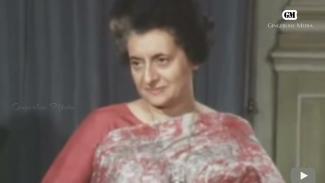 03-Dec-1971
03-Dec-1971Pakistan Attacks India
On the evening of December 3, 1971, Pakistani planes attacked 11 airfields in India. PM Indira Gandhi addressed the nation and stated that the air strikes were a declaration of war against India. IAF responded with initial air strikes soon after
-
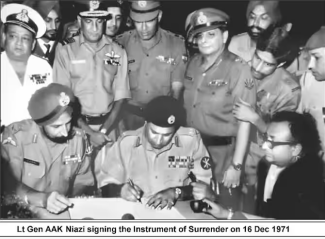 16-Dec-1971
16-Dec-1971India Triumphs, Indira's Steely Resolve Hailed
The Pakistani forces in East Pakistan, commanded by Lt Gen AAK Niazi, surrendered to Lt Gen Jagjit S Aurora, GOC in-chief of the Eastern Command of the Indian Army at Dhaka on Dec 16, 1971, at 16.31 IST.
-
 02-Oct-1976
02-Oct-1976Forty-Second Amendment
Under Indiraji's leadership, the government brought about the 42nd Amendment to the Indian Constituion, which altered the Preamble. It described India as a "sovereign, socialist, secular, democratic republic", adding the words socialist and secular to the earlier version. Also, the phrase "unity of the nation" was modified to "unity and integrity of the nation".
-
 14-Jan-1980
14-Jan-1980Indira Gandhi Sweeps Back to Power
Indira Gandhi sweeps back to power with 351 seats in the Lok Sabha. Janata Party managed to win only 31 seats in the Lok Sabha, bringing an end to one of the most tumultuous eras in Indian political history.
-
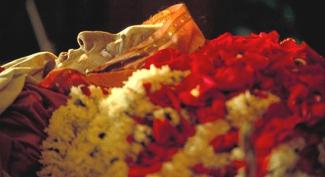 31-Oct-1984
31-Oct-1984Martyrdom of Smt Indira Gandhi
At about 9:20 AM on 31 October 1984, Indira Gandhi was shot dead by her own bodyguards. The nation errupted in an outporuing of grief.
-
 31-Oct-1984
31-Oct-1984Shri Rajiv Gandhi takes over as PM
Shri Rajiv Gandhi was sworn-in as the Prime Minister after Indira ji's martyrdom.
-
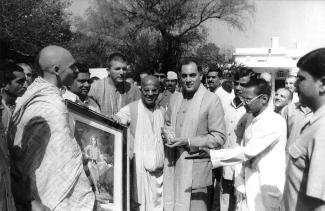 24-Dec-1984
24-Dec-1984Congress Sweeps LS Elections
Under Rajivji's leadership, the Congress swept the 1984 Lok Sabha elections winning 404 seat.The Opposition parties were decimated, with the BJP winning just two seats and the Janata Party ten.
-
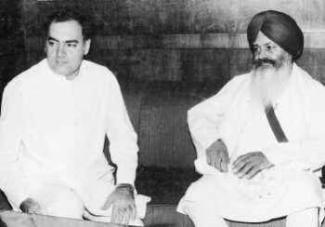 24-Jul-1985
24-Jul-1985Rajiv-Longowal Accord
The Punjab Accord, also known as the Rajiv-Longowal accord, was signed by PM Rajiv Gandhi and Harcharan Singh Longowal on July 24, 1985.According to the agreement, the government accepted the demands of the Akali Dal, which in turn agreed to withdraw its agitation.
-
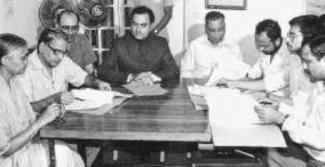 15-Aug-1985
15-Aug-1985Assam Accord
The Government of India and the leaders of the Assam agitation signed a Memorandum of Settlement (MoS) in New Delhi on Augst 15, 1985. The accord was signed in the presence of Prime Minister Rajiv Gandhi by Union Home Secretary R.D. Pradhan, Chief Secretary, Government of Assam, P.P. Trivedi and the leaders of the agitation Prafulla Kumar Mahanta, Bhrigu Kumar Phukan and Biraj Sharma, bringing an end to the Assam Agitation.
-
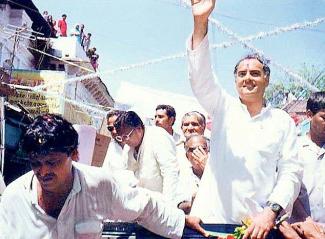 27-Dec-1985
27-Dec-1985Congress Centenary
The Congress commemorated its centenary under the leadership of Rajivji. "Let us build an India ' proud of her independence; powerful in defence of her freedom; strong, self-reliant in agriculture, industry and front-rank technology; united by bonds transcending barriers of caste, creed and region; liberated from the bondage of poverty and of social and economic inequality," Rajivji said.
-
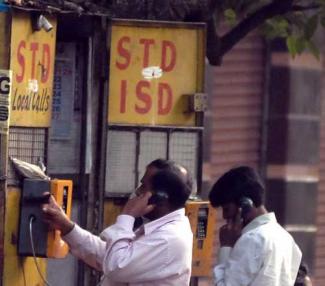 01-Apr-1986
01-Apr-1986Telecom Revolution
The setting up of the MTNL on April 01 1986, marked the begining of Rajivji's telecome revolution. In 1987, he appointed Sam Pitroda as his Chief Technology Advisor, paving way for the setting up of Public Call Offices (PCOs) across the country. The government provided telephones to small entrepreneurs. By 2004, there were 1.52 million PCOs across the country, connecting India like never before. By 2004, there were 1.52 million PCOs across the country, connecting India like never before.
-
 01-May-1986
01-May-1986National Policy on Education
In May, 1986, Rajivji unveiled the a new National Policy on Education, which called for "special emphasis on the removal of disparities and to equalise educational opportunity," especially for women, SCs and STs. This led to the establishment of the Jawahar Navodaya Vidyalaya System. "Operation Blackboard" to improve primary schools nationwide.The policy expanded the open university system with the Indira Gandhi National Open University, which had been created in 1985, opening up the education system,
-
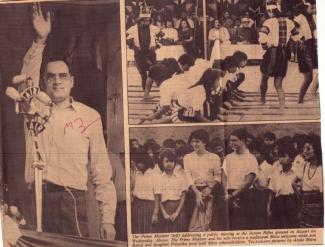 30-Jun-1986
30-Jun-1986Mizoram Accord
The Government of India and the Mizo National Front signed a Memorandum of Settlement on June 30, 1986. The accord restored peace and harmony in the state, which had been in turmoil since the 1950s. The signatories were Laldenga, leader of the movement, R. D. Pradhan, Union Home Secretary, and Lalkhama, Chief secretary, Mizoram.
-
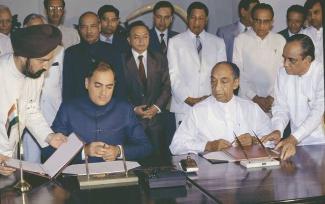 29-Jun-1987
29-Jun-1987Indo-Sri Lanka Accord
PM Rajiv Gandhi and Sri Lankan President J.R. Jayewardene signed the Indo-Sri Lanka Peace Accord to resolve the ongoing civil war in the island country. Colombo agreed to a devolution of power to the provinces while the Tamil rebels were to surrender arms to the Indian Peace Keeping Force. However, the LTTE refused to disarm, declaring their intent to continue the armed struggle for an independent Tamil Eelam.
-
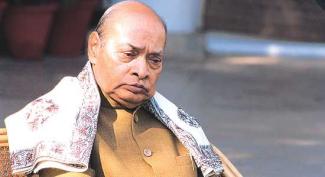 12-Jun-1991
12-Jun-1991Congress Elected
Congress came to power after the martyrdom of Shri Rajiv Gandhi, P.V. Narsimha Rao was chosen as the Prime Minister. He appointed noted economist Dr Manmohan Singh as Finance Minister.
-
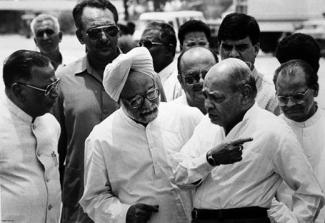 24-Jul-1991
24-Jul-1991Economic Liberalisation
When the Congress returned to serve the country in 1991, the nation faced grave balance of payments crisis. India had to pledge its gold as part of a bailout deal with the IMF. On July 24, 1991 Finance Minister Dr Manmohan Singh introduced a series of reforms that unshackled the Indian economy and put the nation on a robust growth trajectory.
-
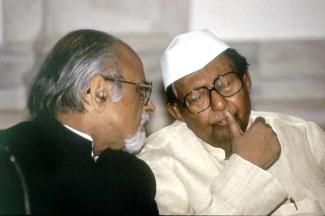 12-Jan-1996
12-Jan-1996Congress Loses General Elections
The Congress lost the 1996 general elections with its tally dropping to 140. P.V. Narasimha Rao resigned from the presidentship of the party. Sitaram Kesri was elected as the new Congress president. To keep the communal forces at bay, the party decided to provide outside support to the United Front government, under the leadership of H.D. Deve Gowda and later Inder Kumar Gujral.
-
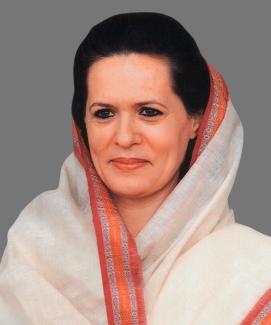 09-Jul-1997
09-Jul-1997Smt Sonia Gandhi takes Primary Membership of the Party
Smt Sonia Gandhi took the primary membership of the party at the Calcutta Session in 1997. In her address, she said "Our ideology of nationalism, secularism, democracy and socialism is the only relevant ideology for our goal country. "
-
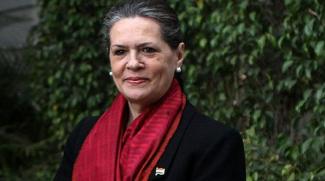 14-Mar-1998
14-Mar-1998Smt Sonia Gandhi takes over as Congress President
Smt Sonia Gandhi persuaded to take over as Congress President to start the revival of the party.
-
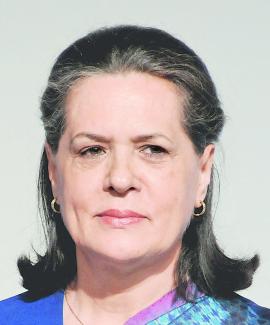 04-Apr-1998
04-Apr-1998New Delhi Session, 1998
During her presidential address, Sonia ji termed the need to revive the Congress as 'a national imperative' rather than a mere partisan requirement. ' see it as my primary task as Congress President to restore to the Congress the vision of the Congress centenary' Power to the People through the panchayats; and Power to the Congress worker through democracy within the Party..' she said.
-
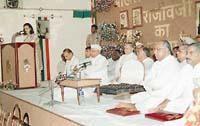 04-Sep-1998
04-Sep-1998Brainstorming Session at Pachmarhi
Smt Sonia Gandhi held a "brainstorming"session or Chintan Shivir at Pachmarhi. One of the most significant developments at Pachmarhi was that the party drafted a 14 point plan for Panchayati Raj and an 8-point plan for agriculture. The party committed itself to tackle communal forces, especially in the context of the rising political fortunes of the BJP.
-
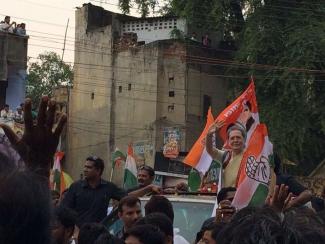 25-May-1999
25-May-1999Renewed Resolve
A Special Session took place under strained circumstances. Upset at the attacks by a few party leaders, Sonia ji tendered her resignation on May 25, 1999. However, the outpouring of support from all levels of the party compelled her to reconsider. During her address, she said: ' standing before you today as a proud Congressperson, doubly resolved to lead the fight for our beloved country. No longer shall we tolerate the negative forces that seek to target the dignity of a woman through calumny and falsehood."
-
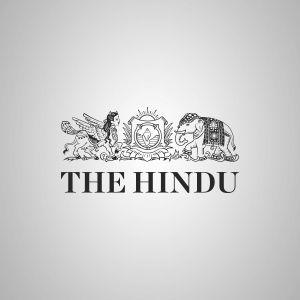 27-Feb-2002
27-Feb-2002Gujarat Riots
Riots broke out in Gujarat after a mob set fire to bogey S-6 of the Sabarmati Express at Godhra station. Over a 1000 people, most of them Muslims are estimated to have been killed in the ghastly violence that ensued. Numerous reports have exposed the role played by the state officials in the riots and the failure of the state machinery in protecting the people. The riots showed the true face of the BJP.
-
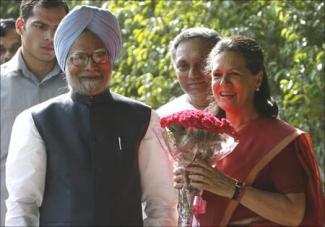 13-May-2004
13-May-2004Congress leads UPA to victory
Congress, under Smt Sonia Gandhi, leads United Progressive Alliance (UPA) to victory in Election defeating the BJP led NDA. Soniaji was elected the head of the Paliamentary Party and was asked to head the UPA government as the Prime Minister.
-
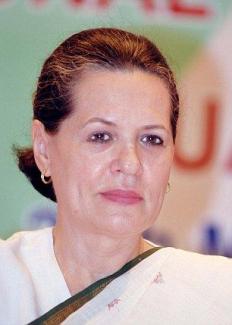 18-May-2004
18-May-2004Smt Sonia Gandhi Renounces PM Post
Congress President Sonia Gandhi renounced the Prime Ministers post saying, "I was always certain that if ever I found myself in the position that I am in today, I would follow my own inner voice. Today, that voice tells me I must humbly decline this post. You have unanimously elected me your leader, in doing so, you have reposed your faith in me. It is this faith that has placed me under tremendous pressure to reconsider my decision. Yet, I must abide by the principles, which have guided me all along".
-
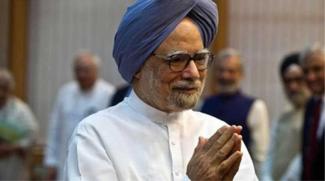 22-May-2004
22-May-2004Dr Manmohan Singh becomes PM
Dr Manmohan Singh took the oath as the Prime Minister of India on 22 May 2004. Dr Singh, had served as the Finance Minister under Prime Minister P.V. Narasimha Rao and is credited with starting the liberalisation process in the country.
-
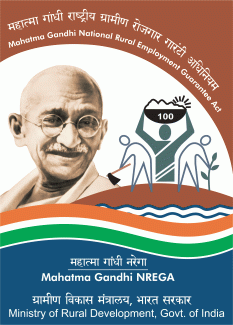 25-Oct-2005
25-Oct-2005NREGA Enacted
National Rural Employment Guarantee Act (NREGA) became an Act on August 23 2005. The Act provides for 100 days of guaranteed employment for every Indian who seeks work. The UPA Government has allocated close to Rs 2 lakh crore to the scheme. The Scheme was renamed as MNREGA on Oct 2, 2009 in the memory of Mahatama Gandhi.
-
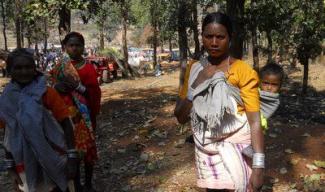 18-Dec-2005
18-Dec-2005Forests Right Act enacted
The Forest Rights Act 2006 was passed on December 18 Dec 2006. The legislation redressed the historical injustice against forest dwellers giving them greater control over their resources and life.
-
 01-Apr-2007
01-Apr-2007National Rural Health Mission launched
The National Rural Health Mission (NRHM) was launched by the Congress - led UPA government as part of its commitment to ensuring quality healthcare for all. The scheme proposed a number of new mechanisms for healthcare delivery including training local residents as Accredited Social Health Activists (ASHA) and the Janani Surakshay Yojana.
-
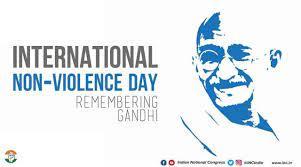 02-Oct-2007
02-Oct-2007Non-Violence Day
The Satyagraha Conference resolution in New Delhi is initiated by Smt Sonia Gandhi, as Archbishop Desmond Tutu called upon the UN to adopt the idea. The UN General Assembly voted on June 15, 2007 to establish 2 October as the International Day of Non-Violence.
-
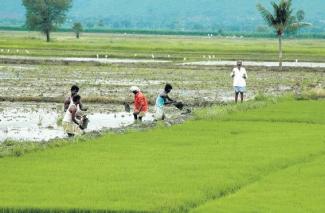 29-Feb-2008
29-Feb-2008Farm Loan Waiver
UPA Govt announced a Rs 72,000 crore waiver of loans taken by more than 4.30 crore small and marginal farmers across the country. In most of the Indian States, the number of small and marginal farmers ranged from 70% to 94% of the total number of farmers.
-
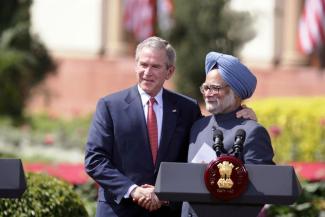 22-Jul-2008
22-Jul-2008UPA wins Nuke Deal Trust Vote
UPA government won the confidence vote, clearing the way for it to finalise a landmark nuclear energy deal with the United States. Nuclear energy is critical to the energy security of the country.
-
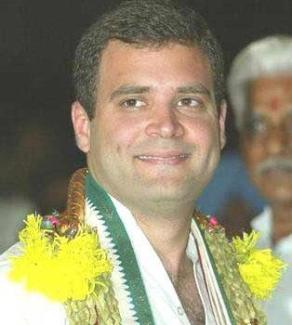 24-Sep-2008
24-Sep-2008Shri Rahul Gandhi is appointed as General Secretary, AICC
Shri Rahul Gandhi is elected by the Party as General Secretary, AICC, and also given charge of the Indian Youth Congress and the National Students Union of India.
-
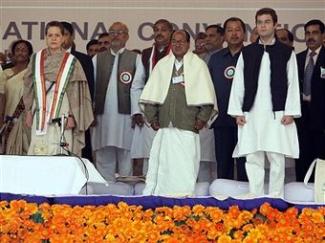 09-Feb-2009
09-Feb-2009Block Congress Committee and District Congress Committee National Convention
The National Convention of the BCC and DCC was organised by their Presidents on Ramlila Grounds in Delhi. Party leadership heard the views of grassroots workers.
-
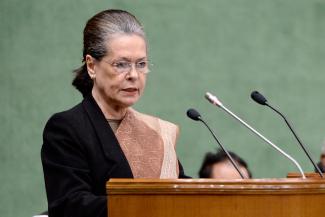 29-Dec-2009
29-Dec-2009125 glorious years of serving the nation
As the Indian National Congress celebrated 125 glorious years of serving the nation, Congress President Sonia Gandhi addressed party workers at a celebration held to mark the occasion, and said, “The party has always promoted secularism through a consensual approach, and has stood for the protection of the rights of the poor.”
-
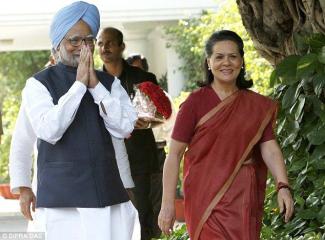 16-May-2010
16-May-2010United Progressive Alliance wins Lok Sabha Polls
The Congress-led United Progressive Alliance wins 262 seats in the 2009 Lok Sabha elections against 159 seats for the NDA. INC emerges as the single largest party with 206 seats. Dr Manmohan Singh is sworn in as Prime Minister for a second term.
-
 19-Dec-2010
19-Dec-201083rd Congress Plenary takes place in Burari
Addressing the Congress Plenary in Burari, Smt Sonia Gandhi asked Party leaders to reflect on why the people of India should place their trust in the Congress. She said, “We are a party with a glorious past. We are the party of the future. It is for us to ensure that the Congress holds out hope for each and every Indian. That is our obligation.”
-
 18-Jan-2013
18-Jan-2013Jaipur Chintan Shivir
Congress leaders from across the country gathered at Jaipur to look at the journey so far and the challenges ahead. Shri Rahul Gandhi was appointed as the Congress Vice President at the conclave.
-
 18-Jan-2013
18-Jan-2013Jaipur Declaration
The Congress adopted the Jaipur Declaration which laid out the party's roadmap for the future. The party rededicated itself to representing people's aspirations, especially those of the youth.
-
 20-Jan-2013
20-Jan-2013Rahul Gandhi elected Vice President unanimously by the Congress Working Committee
At the Jaipur Declaration of the CWC, Rahul Gandhi was formally elected the party Vice President, and said that the party would unify in working together to transform the country. Then Prime Minister Manmohan Singh spoke on the country’s economic and political issues.
-
 15-Dec-2017
15-Dec-2017Rahul Gandhi unanimously elected Party President
The party headquarters at 24, Akbar Road saw a smooth change of guard on 16th December, 2017, as Rahul Gandhi was unanimously elected Party President on the 11th of December. As he took over the reins, Rahul Gandhi said to the party workers, “I want to assure all the Congress workers and leaders that you are all my family...I want to tell the youth of this country that Congress is often referred to as the grand old party but going forth we are going to make it the grand old young party."
-
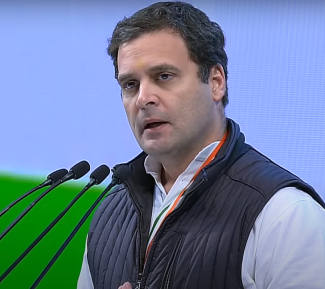 18-Mar-2018
18-Mar-201884th AICC Plenary Session held at New Delhi, the first under Congress President Rahul Gandhi
Attended by party members from all over the country, the Plenary set forth Congress President Rahul Gandhi’s vision for the future. In his address, the Congress President said that "If the youths have to take the Congress forward, it cannot be done without the experience the party veterans. My task is to take them forward together."
-
 22-Jul-2018
22-Jul-2018Congress Working Committee meet held in Delhi, first such under party president Rahul Gandhi
Congress president Rahul Gandhi described the revamped Congress Working Committee (CWC) as a bridge between the past, present and future, and said it was an institution combining experience and energy. Several veteran leaders were present to give their blessings to the CWC and extend support to Congress President Rahul Gandhi, even as he called on all party members to work for India’s oppressed.
-
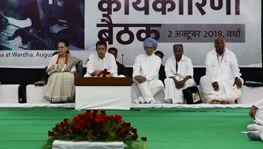 02-Oct-2018
02-Oct-2018Mahatma Gandhi’s 150th Birth Anniversary marked with a Congress Working Committee Meeting in Wardha
Congress President Rahul Gandhi, while addressing the meeting, called for unity in the country, and said that “While Mahatma Gandhi wanted to unite India, PM Modi wants to divide us.” The meeting also condemned the Modi government’s attitude towards farmers in the country, on a day when police used water cannons and tear gas shells against protesting farmers outside Delhi.
-
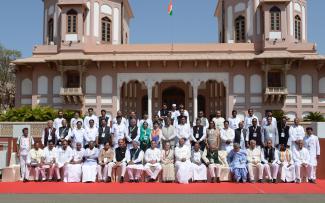 12-Mar-2019
12-Mar-2019Congress Working Committee meeting, Ahmadabad, on the 89th anniversary of the Dandi Satyagrah
To commemorate the historic Dandi Satyagrah, and celebrate Gandhiji’s contribution towards our Independence and his commitment to peace, a meeting was held in Ahmedabad, Gujarat. Smt Priyanka Gandhi Vadra spoke on the occasion as she reminded each Indian of their duty towards maintaining an atmosphere of peace. She condemned the attack in Pulwama and paid her respects to the lives lost, and said the country must come together at a time like this and reject the BJP’s promotion of violence and fear.